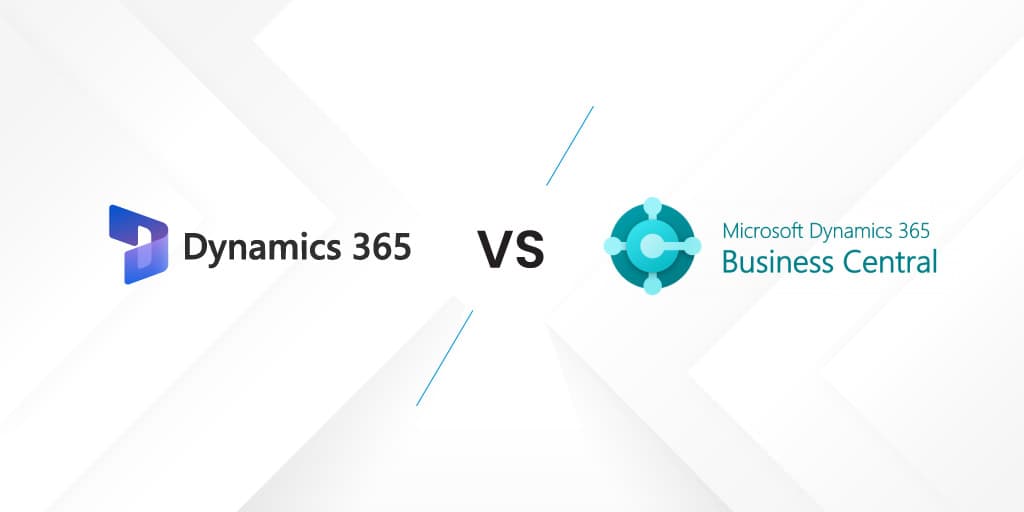
How Dynamics 365 Adapts to Manufacturing, Retail, and Professional Services
Every industry operates differently: a manufacturing plant focuses on production efficiency, while a retail chain tracks sales and inventory...

Every year, thousands of organizations make ERP decisions that either accelerate their growth or cripple their operations for the next decade. The difference often comes down to one critical moment: choosing between Microsoft’s enterprise-grade Finance & Supply Chain Management platform and its versatile Business Central solution. For CFOs and IT Directors, this is a strategic bet on your company’s future that can either unlock millions in operational efficiency or trap you in an expensive system that does not match your reality. This blog explores both options to help you find the perfect fit for your business goals.
Microsoft Dynamics 365 Business Central serves as Microsoft’s comprehensive ERP solution for small and mid-sized businesses, typically under 300 users or $100 M in revenue. It provides a unified system for finance, supply chain, project management, sales, and service, plus powerful integration with Office 365, Power BI, and Power Platform. Originally evolved from Dynamics NAV, Business Central has been rebuilt on modern cloud architecture to deliver enterprise-grade functionality at a scale appropriate for growing businesses. Recent data shows Microsoft Dynamics 365 Business Central held over 87% of the global ERP market share in 2024
Microsoft Dynamics 365 for Finance and Operations represent Microsoft’s enterprise-level solution, designed for large organizations with complex, multi-entity operations. These applications, formerly bundled as “Finance & Operations,” now operate as separate but integrated modules that can be deployed individually or together. It has advanced capabilities to manage complex global finance, manufacturing, logistics, and compliance at scale.

| Decision factor | Business Central | Finance and Operations |
| Company size | Ideal for 10 to 200 users; rapid setup | Scales from 200 to 10,000+ users; modular deployment |
| Financials | Strong general ledger, budgets, and multi‑currency | Advanced intercompany, global consolidations, and regulatory compliance |
| Supply Chain and Operations | Basic inventory, order management, and standard production | Full SCM suite including warehousing, transportation, planning, and IoT |
| Manufacturing | Basic manufacturing in the Premium edition | Discrete, process, and lean manufacturing at scale |
| Industry verticals | Services, light manufacturing, and distribution | Automotive, pharmaceuticals, equipment, and complex manufacturing |
| Integration and innovation | Standard connectors, Power BI, Power Automate | Full Common Data Model, AI, ML, Copilot, Azure Synapse integration |
| Deployment options | Cloud-first SaaS, hybrid, or on-prem | Cloud-native with hybrid extension support |
| TCO and licensing | Predictable per-seat at $70 to $100/mo | Modular, higher licensing ($170 to 220/mo) with flexible scale |
Dynamics 365 Business Central’s strength lies in its relatively straightforward implementation process. Most Business Central implementations can be completed in three to six months with moderate customization, making it attractive for organizations seeking quick deployment and faster time-to-value. For companies looking to move even faster, LevelShift offers a QuickStart package, a systematic, best-practice-led implementation approach designed to get core Business Central functionality up and running in weeks.
Dynamics 365 for Finance and Operations (D365 F&O) implementations typically require six to 18 months, depending on complexity and customization requirements. However, this extended timeline reflects the solution’s ability to handle complex business processes and extensive customization needs that enterprise organizations often require.
Dynamics 365 Finance & Operations vs Dynamics 365 Business Central Licensing Costs
Dynamics 365 BC typically delivers ROI through operational efficiency, faster financial close, improved inventory visibility, and reduced reliance on manual processes. Organizations often see benefits within the first 6 to 12 months post-implementation and report up to 162% ROI over three years. The simplified interface, lower total cost of ownership, and faster deployment help accelerate time-to-value.
Dynamics 365 Finance and Operations (F&O) takes longer to implement, but it delivers deeper, long-term gains. Enterprises in sectors like manufacturing, logistics, and healthcare often report ROI upwards of 200% over three to five years, driven by process optimization, real-time data insights, and scalable global operations. Although the upfront investment is higher, the 18- to 36-month payback brings lasting value through financial automation, predictive insights, and supply chain optimization.
Start by assessing your organization’s current size, growth trajectory, and operational complexity. Consider not just where you are today, but where you expect to be in three to five years. Business Central offers excellent scalability for growing organizations, while Finance and Operations provide the sophistication required for complex enterprise operations.
Evaluate your integration requirements carefully. Organizations with extensive existing technology investments may benefit from the modular approach of Dynamics 365 Finance and Operations, while those seeking simplicity often prefer Business Central’s integrated architecture.
Consider your implementation timeline and the capacity for change management. Dynamics 365 Business Central’s faster implementation cycle appeals to industries, such as professional services, retail, and distribution, where time-to-value and agility are critical. On the other hand, Dynamics 365 Finance and Dynamics 365 Supply Chain Management typically requires a more extended implementation period, which is better suited for manufacturing, healthcare, and large-scale logistics organizations that need in-depth process optimization, system integration, and advanced customization to support complex operations.
If your business is mid-sized, growing steadily, and looking for an integrated ERP that delivers fast results, Dynamics 365 Business Central is likely your answer. It is nimble, user-friendly, and gets your team aligned without the complexity of a massive rollout. For businesses transitioning from NAV, GP, or other ERP systems, LevelShift’ QuickStart Business Central package offers a rapid pathway to leverage Business Central’s full functionality without extended implementation timelines.
Both Dynamics 365 Business Central and Dynamics 365 F&O come with built-in Microsoft Copilot features designed to make everyday tasks easier and faster.
In Business Central, Copilot helps streamline routine work, such as drafting email responses to customers, generating product descriptions, or summarizing financial reports. It is especially handy for small teams that need to move quickly without getting bogged down in administrative tasks.
In Dynamics 365 Finance and Supply Chain Management, Copilot provides more advanced support. It can analyze financial data, flag anomalies, suggest budget forecasts, and even help optimize supply chain planning using real-time data.
Experts at LevelShift don’t believe in one-size-fits-all consulting. That is why we introduced our On-Demand Services model, which we refer to as “Service-as-a-Service.” It offers a flexible, pay-as-you-use approach that provides expert support without locking you into rigid contracts. Whether you need a few hours of help or ongoing guidance, we scale with your needs and work at your pace.
This on-demand approach offers the following benefits.
And remember, the software is only as successful as the team behind it. A trusted Microsoft partner can help you navigate the path from evaluation to execution with clarity and confidence. With LevelShift’ flexible Service‑as‑a‑Service model, you can access that expertise precisely when and how you need it.
Whether you are weighing options or ready to dive in, we would like to hear about your current stage in your ERP journey. Drop us a message, request a tailored walkthrough, or book a TCO assessment today.

What does a half-decade of innovation cost? For Business Central users, the answ...

Did you know that several ERP projects have a 75 percent chance of failure? That...

Your legacy system holds years of customer records and custom fields nobody reme...

How Dynamics 365 Adapts to Manufacturing, Retail, and Professional Services
Every industry operates differently: a manufacturing plant focuses on production efficiency, while a retail chain tracks sales and inventory...

Transform Enterprise CX with Copilot in Dynamics 365 Customer Insights
For enterprises with over $100 million in revenue, data is both a goldmine and a growing pain. Teams gather massive amounts of customer data...

Microsoft Dynamics 365 with Copilot Agents vs. Without: What Difference Does It Make?
Microsoft Dynamics 365 brings together CRM and ERP capabilities under one roof, giving businesses a unified platform to manage operations. I...